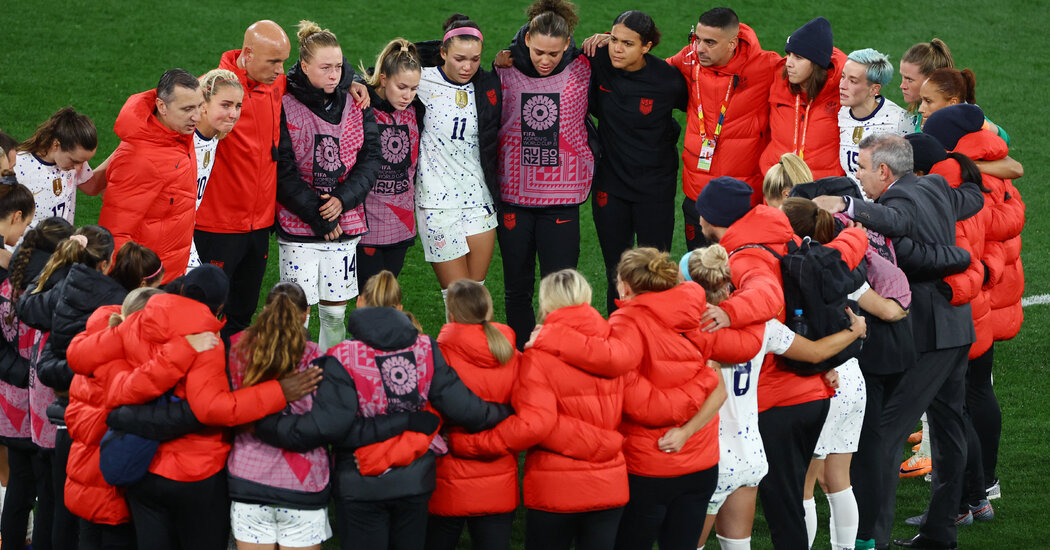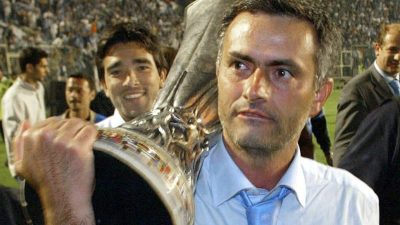Even in the highest-resolution image, examined up close, there was not so much as a discernible sliver of daylight. The margin by which the United States was eliminated from the Women’s World Cup was so microscopic that it cannot be expressed in a unit of measurement the country fully recognizes.
A millimeter, a single millimeter, is no more than 0.04 inches, yet even that most slender gap can serve as the gossamer border between two realities. Such is the unspoken truth of sports, of course: The difference between triumph and disaster, delight and dismay, can be far thinner than we choose to pretend.
For the United States, there is some comfort in that. “It is tough to have your World Cup end by a millimeter,” Alyssa Naeher, the U.S. goalkeeper, said after her team’s loss to Sweden in a penalty shootout Sunday. It does not take an especially vivid imagination to envision how the outcome might have been different.
Had Naeher intercepted Lina Hurtig’s shot at a slightly different angle, maybe the spin would have carried the ball to safety. Had Hurtig struck her penalty more softly, or more firmly, maybe Naeher would have saved it more decisively. Granted a reprieve, maybe the United States would have gone on to win that game in the round of 16, the tournament, the crown. Maybe, maybe, maybe.
That solace, though, is an illusion, and so too is the idea that the United States was eliminated by a millimeter. It was not one penalty that ended its hopes of a third straight title and, in the process, drew the veil over a whole golden, glorious generation, no matter how tempting it might be to believe. This is another unspoken truth of sports: Moments do not exist in isolation.
There is a certain irony in the fact that it was against Sweden that the United States, so limp and insipid earlier in the tournament, started to show signs of life. Naomi Girma was imperious. Lindsey Horan was dynamic. Sophia Smith, Trinity Rodman and Lynn Williams were all, at various points, electric. There were glimpses, in Melbourne, Australia, of what this team might one day be.
But that should not disguise the shortcomings of what came before. The United States was only in position to be knocked out by Sweden because it had failed to beat both the Netherlands and — more troubling — Portugal in the group stage.
The United States, the two-time reigning champion and pretournament favorite and great superpower of women’s soccer, won only one game in Australia and New Zealand, and that was against Vietnam. It was not even supposed to be in Melbourne. It was meant to be in Sydney, playing the Group G runner-up, at a time that had been especially arranged so that it was not in the middle of the long American night or early in the morning.
The spin of the ball, the single millimeter, was the culmination of a succession of failures, ones that can most immediately be traced to the last two weeks, but the roots of which stretch back not just months but years. To dismiss this disappointment as merely a cruel twist of fate, is to risk failing to learn from them, making them endemic.
It is not enough, for example, to point the finger of blame at the coach, Vlatko Andonovski. He will, most likely, be removed from his position before his contract expires at the end of the year, and it is hard to make a case for his retention. This is the worst performance an American team has ever mustered at a World Cup. A price has to be paid.
But Andonovski is not the cause of the malaise. There are structural, systemic issues that have to be addressed, too. There are issues with the way the United States produces players, a fragmented system is reliant on pay-to-play youth teams in disparate leagues, unattached to elite adult teams, feeding into the college system.
That was fine when the United States effectively had a monopoly on professionalized women’s soccer, before the major men’s teams of Europe and South America decided — and let’s not cast them as the good guys here, given how long it took — that maybe women might enjoy the chance to play the sport.
In an ecosystem in which the intellectual and financial weight of global soccer can be deployed to hothouse talented young players, the American approach is not so much lacking as a guarantee of failure. So, too, is the continued emphasis on physicality, rather than cunning, that such a system favors. It is not a coincidence that the United States was eliminated from the tournament when its one player of genuine invention, Rose Lavelle, was absent. Lavelle is the one player, after all, that her country simply cannot replace.
Nurturing talent, though, is just the first problem. It is significant that Horan is the only member of Andonovski’s squad currently playing in Europe. Others, including Megan Rapinoe and Alex Morgan, have spent time there, but most have been drawn back to play in the surging National Women’s Soccer League.
That is, in many ways, good. A healthy domestic league is not only desirable but a crucial ingredient in success. But it also hints at a creeping isolationism, a disconnection from Europe’s major leagues, which are now emerging as the game’s fiscal engine and its intellectual crucible, too.
The United States needs players competing against their rivals and peers in the Champions League, not only as a finishing school but as a way to better understand their relative strength. Smith, for example, is lavishly gifted, but is she more so than Lauren James of England, Aitana Bonmatí of Spain or Linda Caicedo of Colombia? Answering that question is crucial for understanding how to set expectations.
Most immediately, though, what is required is a generational shift. It is, as Rapinoe herself put it, a “sick joke” that her last act at a World Cup will be missing a penalty. She has already confirmed she will retire at the end of the N.W.S.L. season. There are others, though, who may have to be ushered into the autumn of their careers rather less willingly.
That is never a pain-free process, and it will be all the more agonizing because of all this team has achieved. Naeher, Morgan, Julie Ertz, Kelley O’Hara and Crystal Dunn — as well as the absent Becky Sauerbrunn — have all enjoyed distinguished, glittering careers, the final, glorious ambassadors of a generation that won two World Cups.
Moving on would always be difficult in a purely sporting sense. It is made all the more charged, though, because of what this team means in a cultural one. They are, rightly, revered as players but they are also admired because of the causes — equal pay, equal rights, the struggle against racism and misogyny and homophobia — that they have willingly adopted.
They mean something to people, to fans, in a way that other athletes do not. The adoration, the loyalty, the fervor they have inspired has more in common with political or cultural idols than it does with humdrum sports fandom.
As Rapinoe has always acknowledged, though, the activism has to flow downstream from the sport. Winning, she said, is necessary because it is the precondition for people wanting to hear what you have to say. Victory has always been what allowed the U.S. players to speak their minds and to make their stands to the most people.
It follows, then, that when they are no longer almost a guarantee of winning — when they might, in some senses, make success less likely — then they cannot be protected for what they represent, for what they mean, rather than what they do. There comes a point when they have to be judged as athletes, not activists, and that means knowing when to say goodbye.
None of that would have been changed had Naeher managed to keep out Hurtig’s penalty, had the ball spun just out, had that microscopic difference worked in the Americans’ favor. This United States team was always coming to the end of its road. No matter where the ball landed, there was never any other reality than the one the United States finds itself in now, at the end of one era and the start of another.
Sumber: www.nytimes.com








